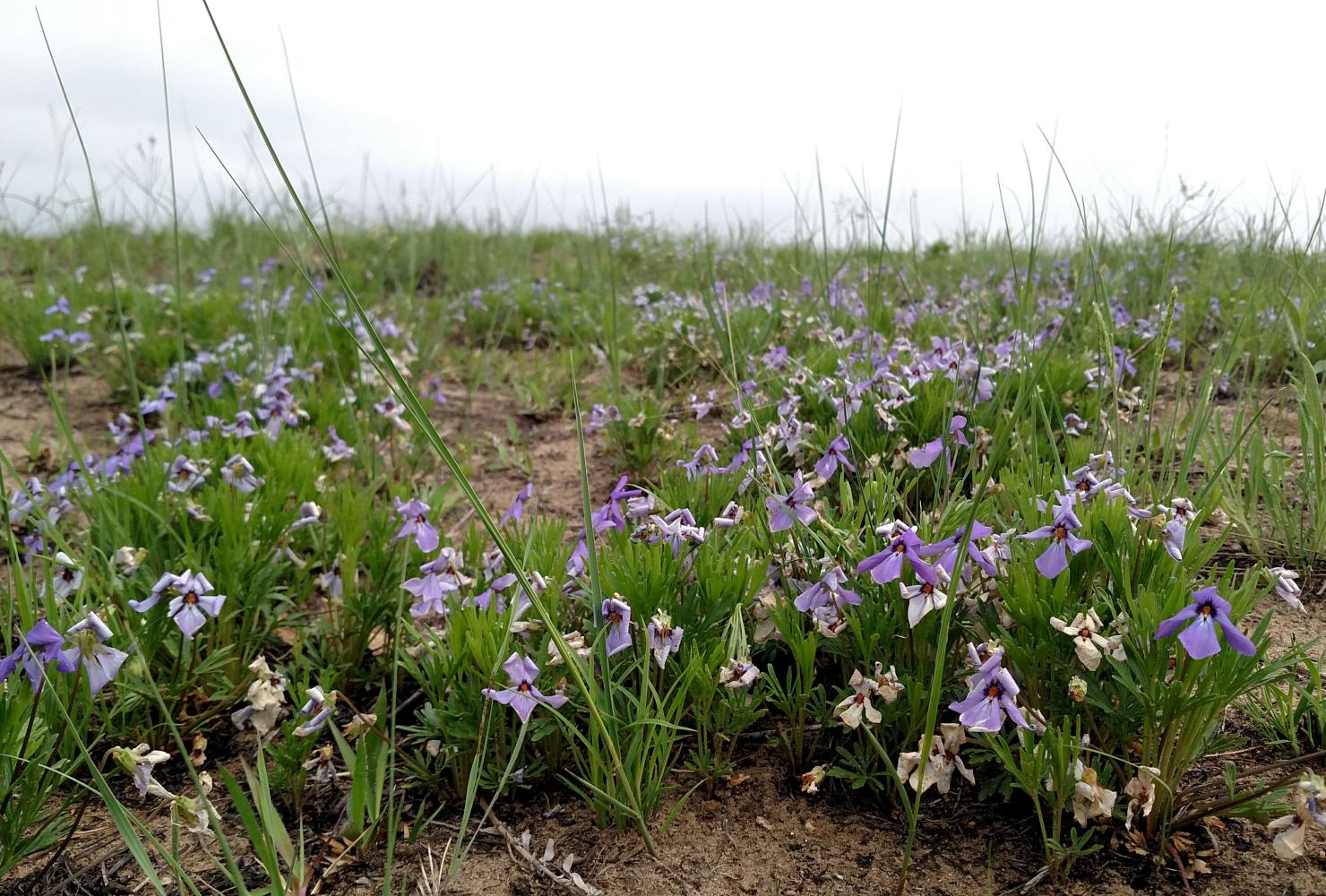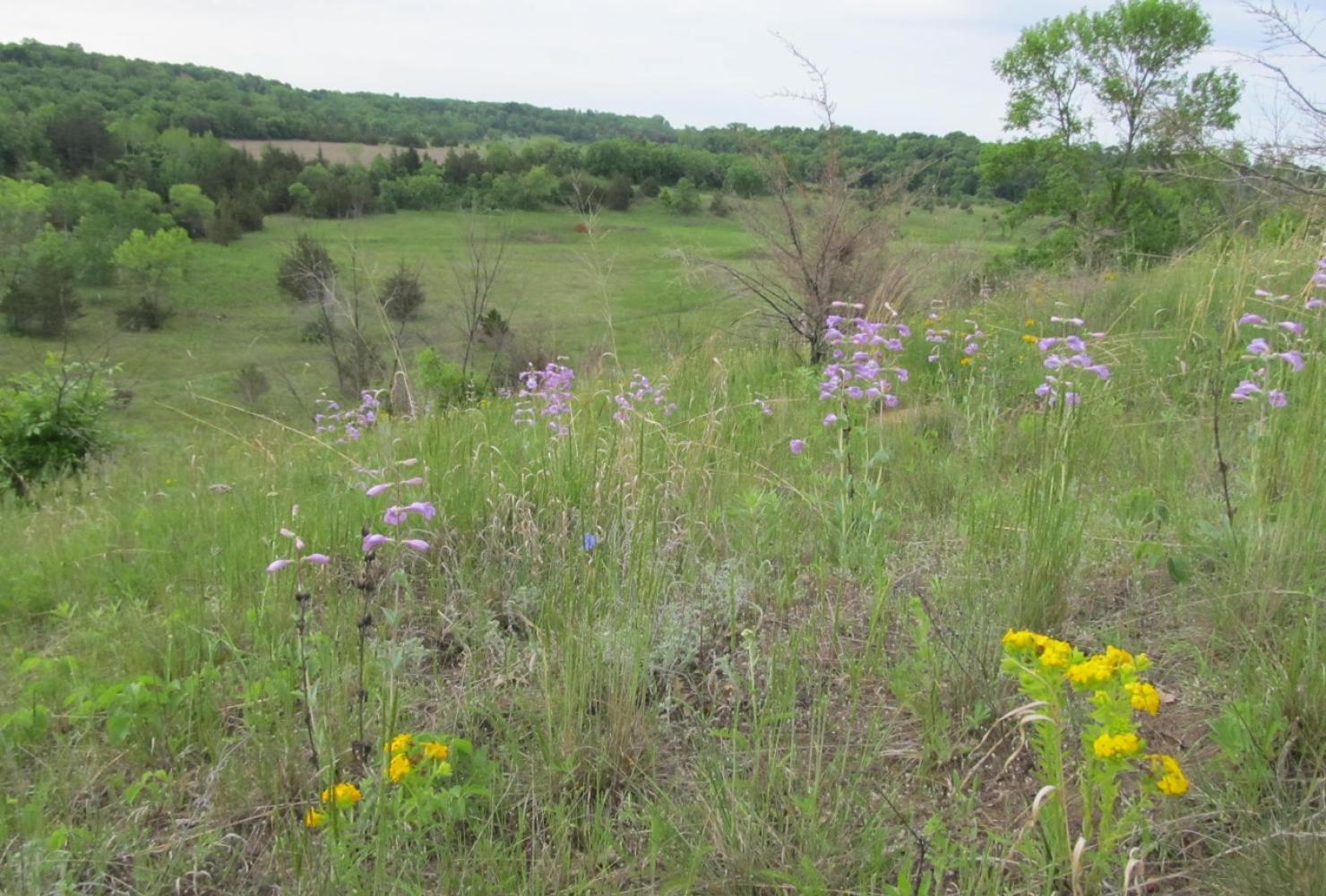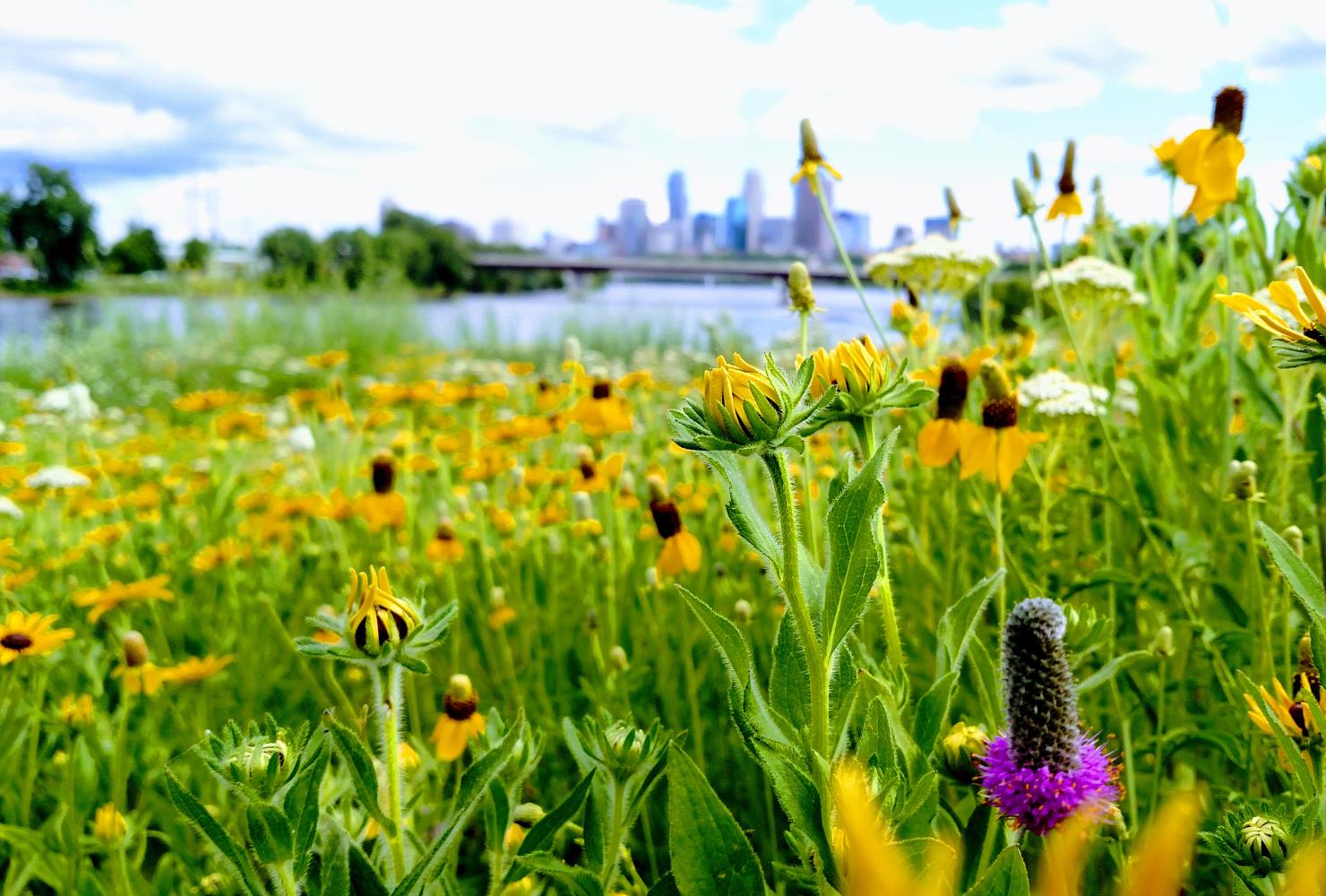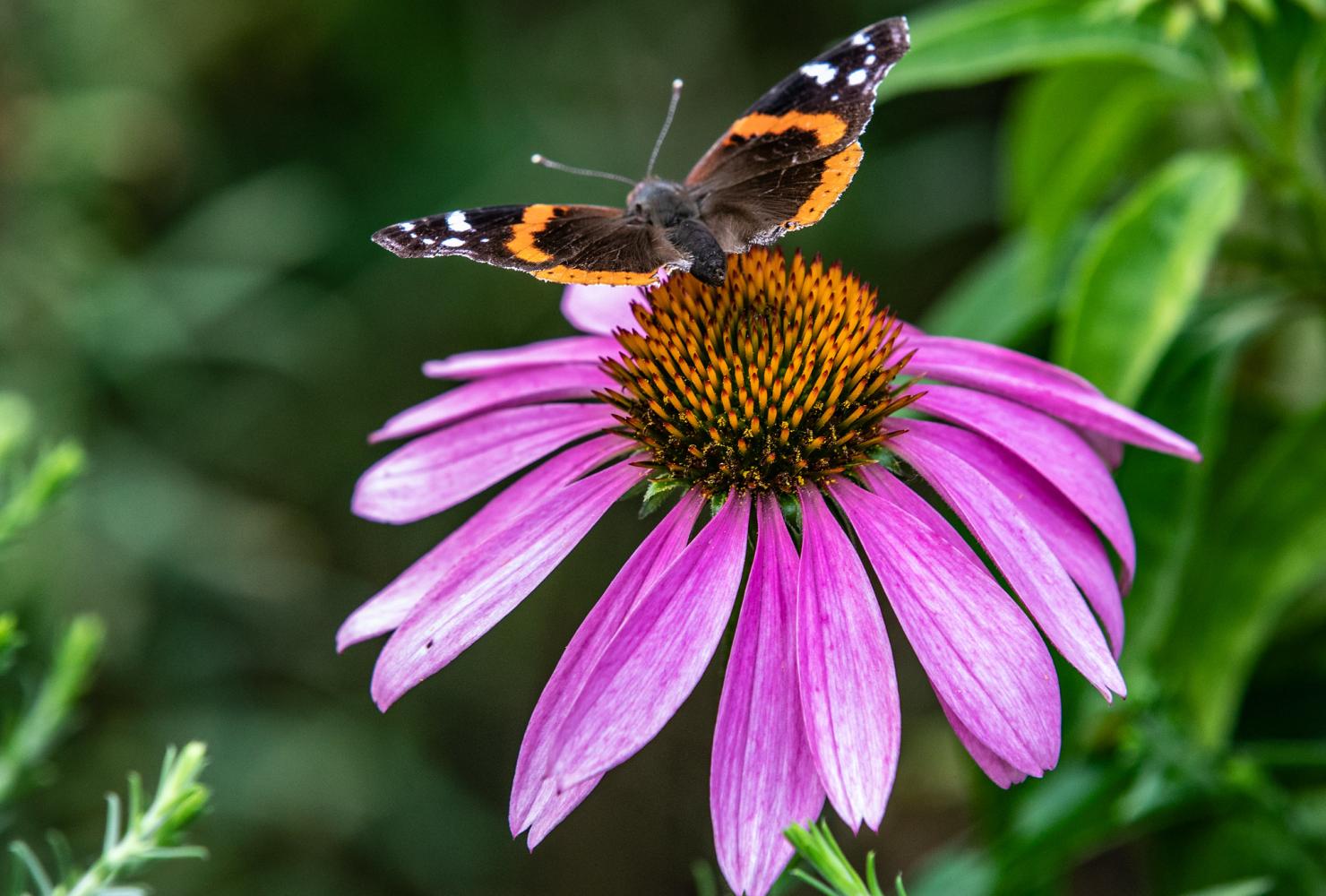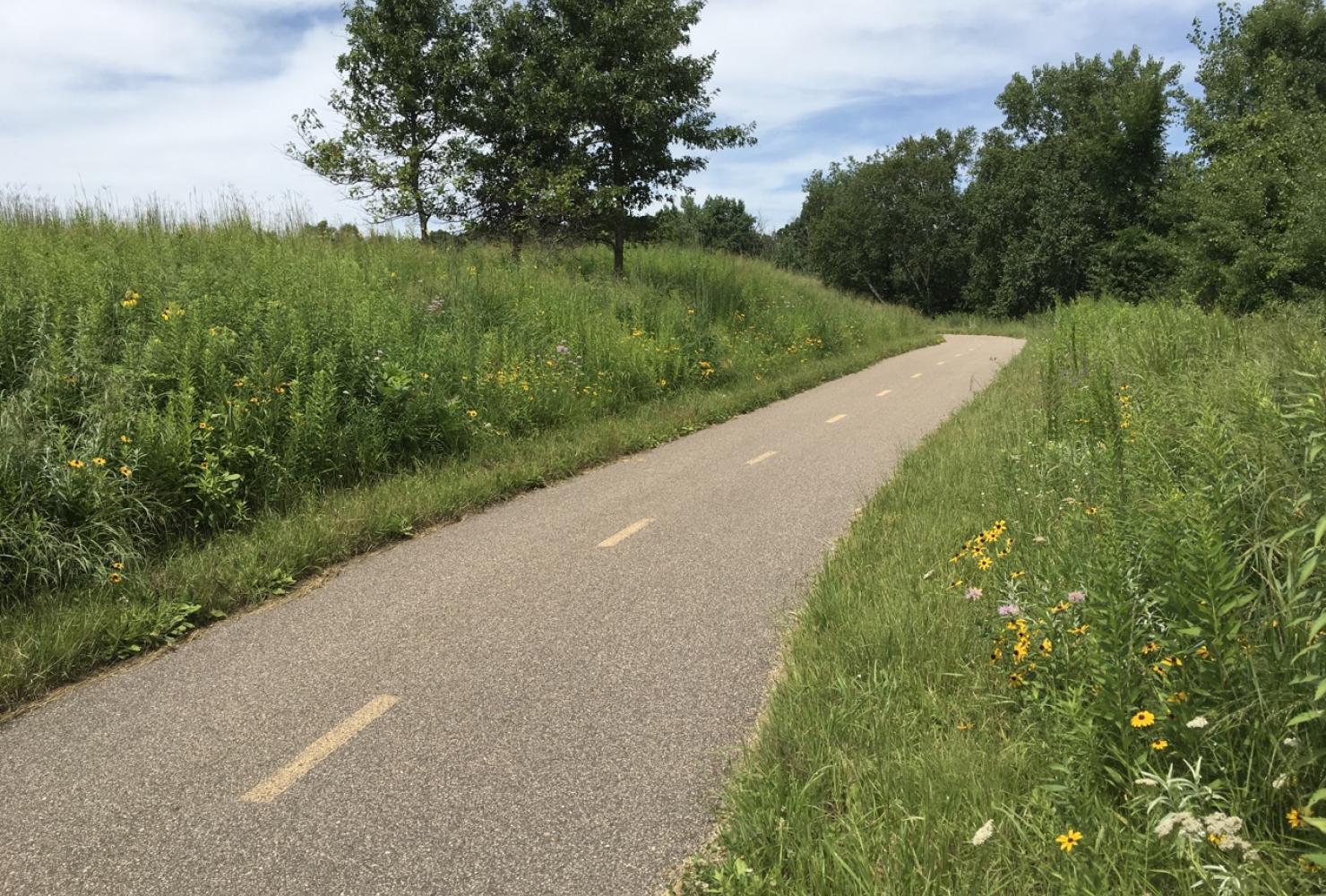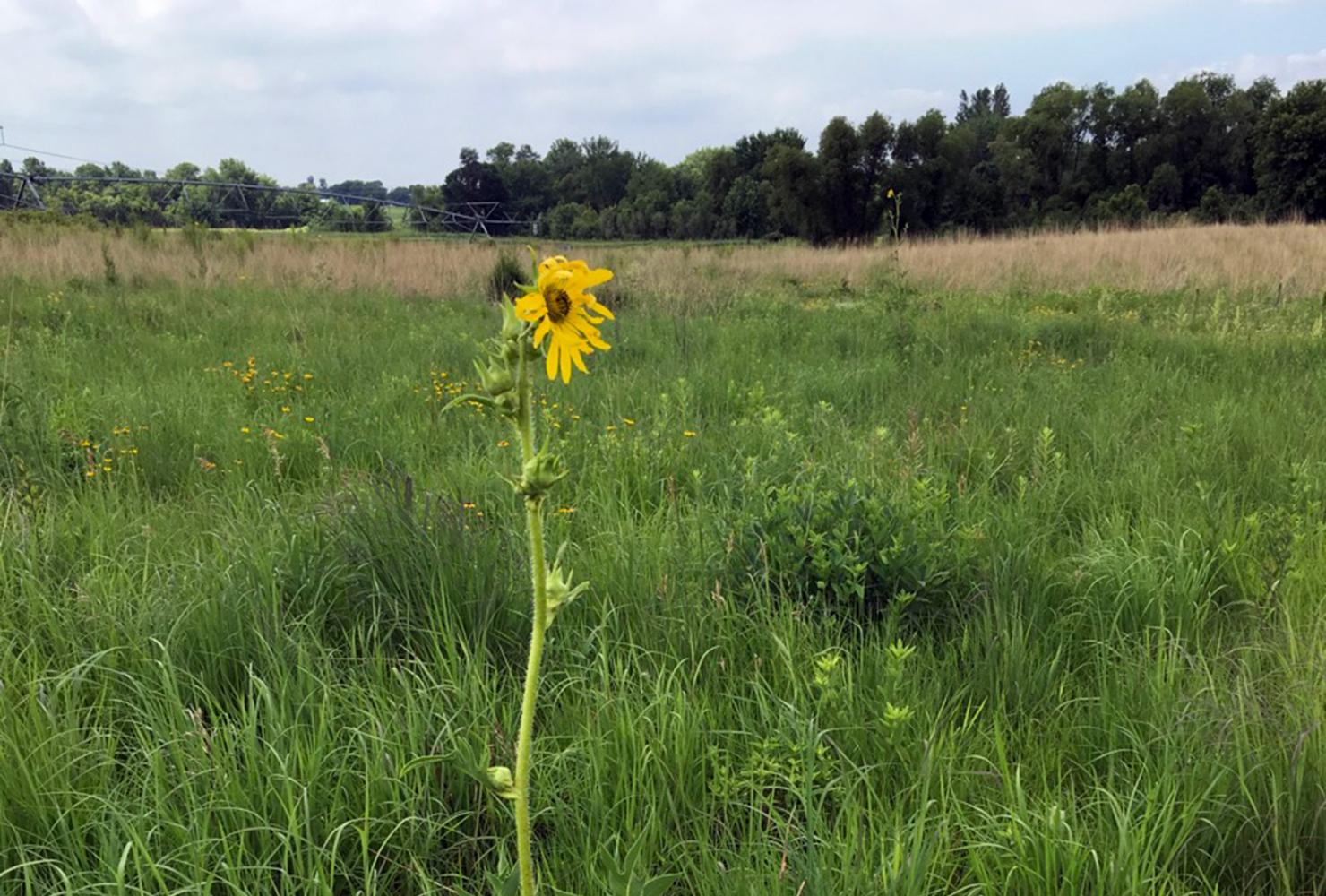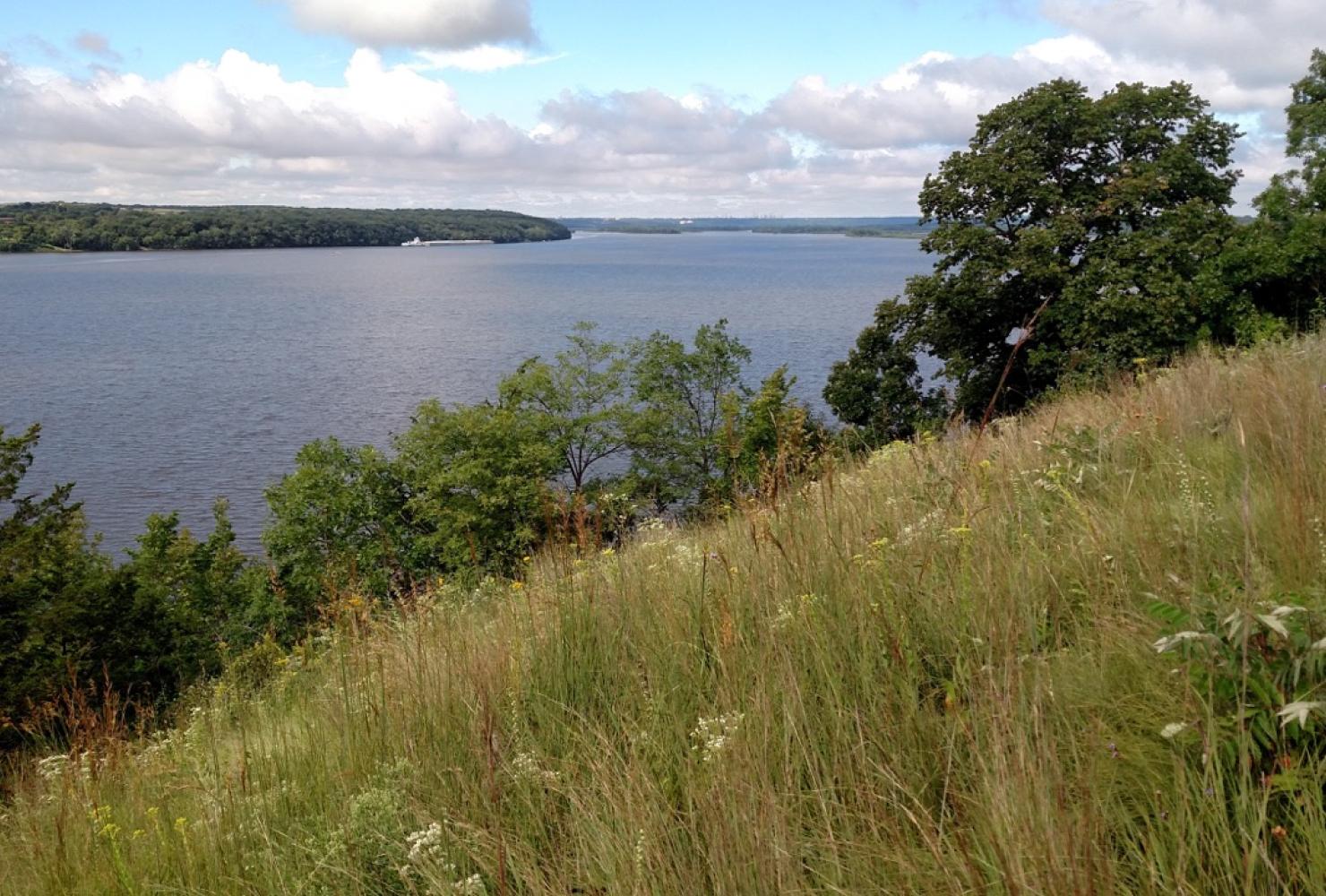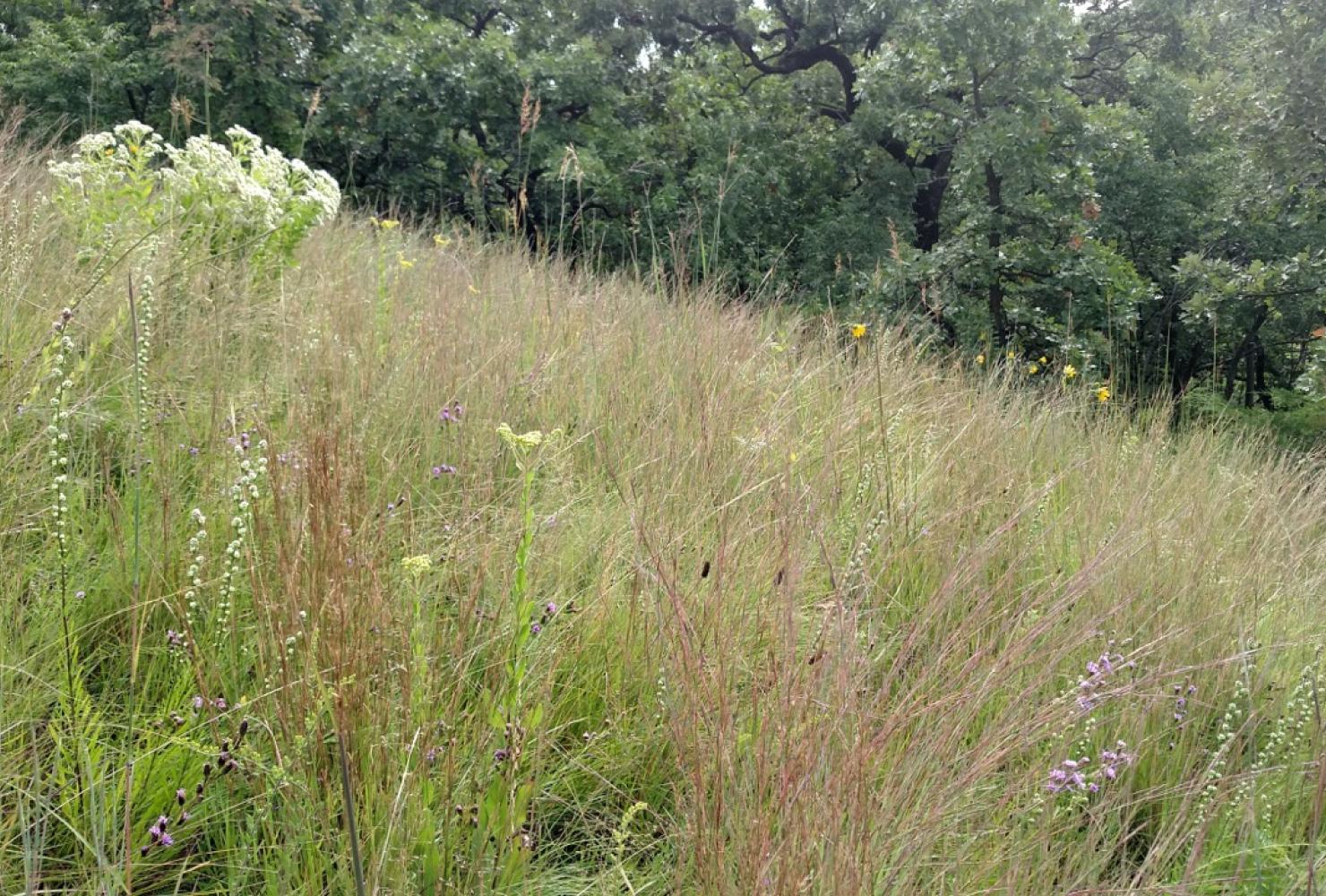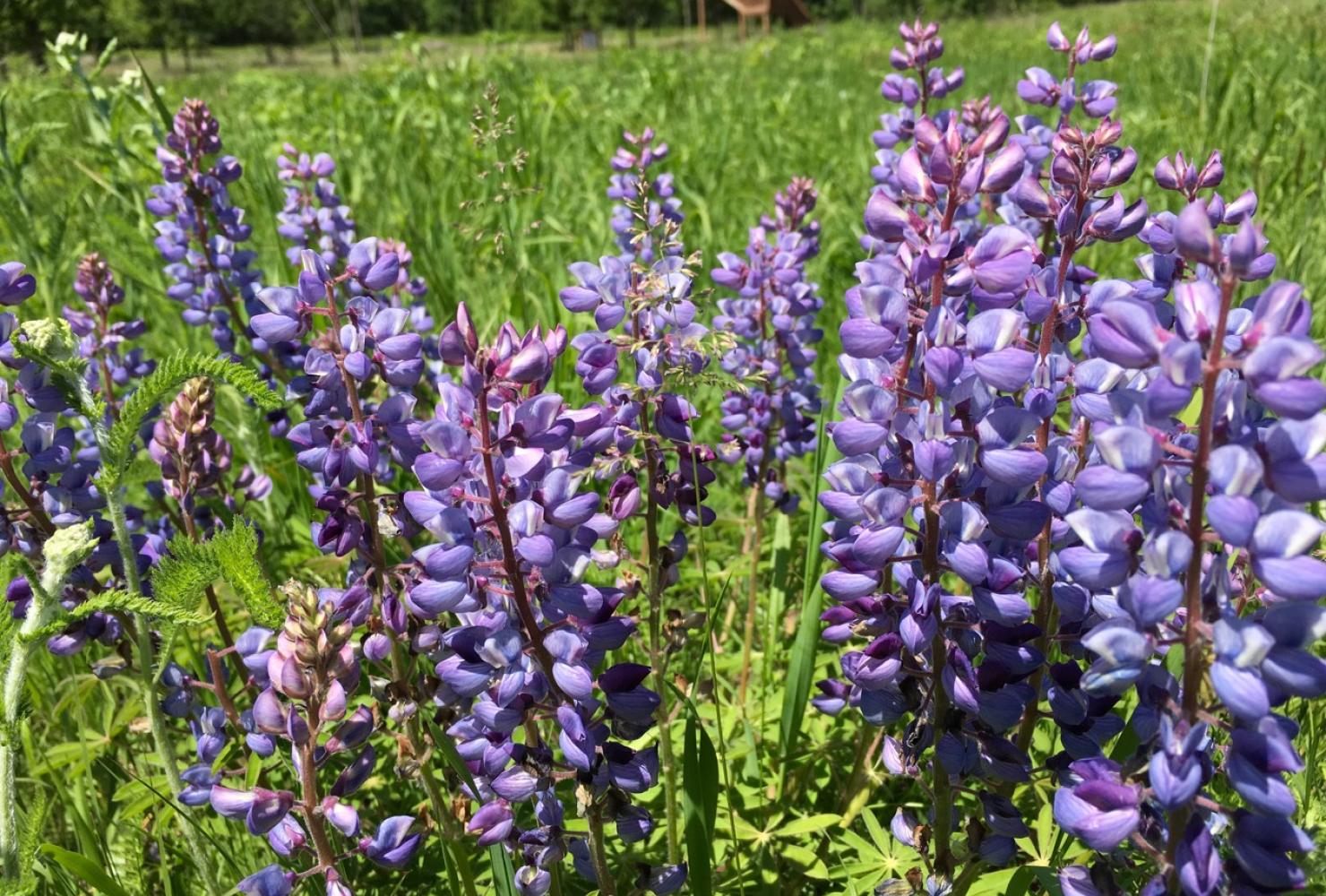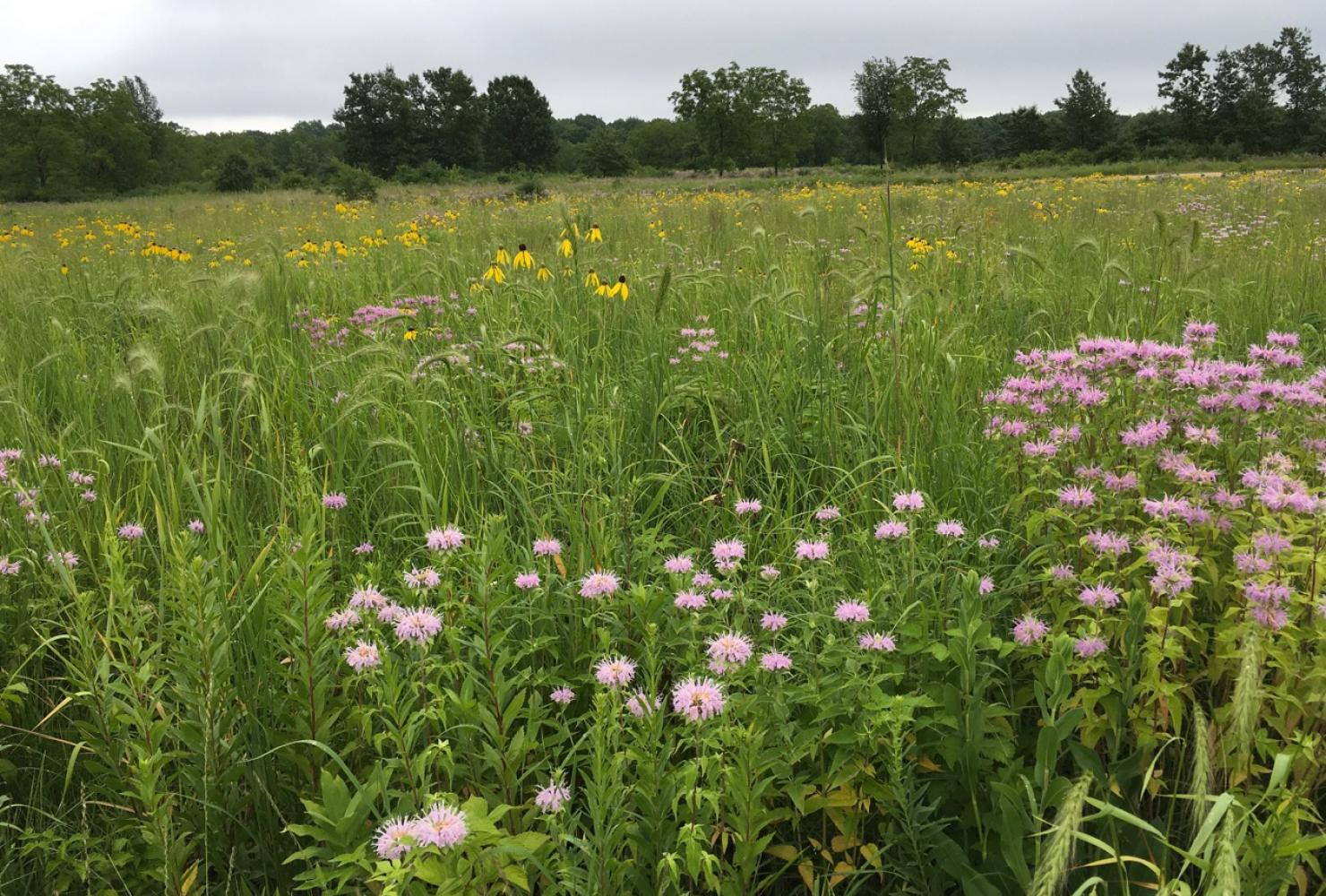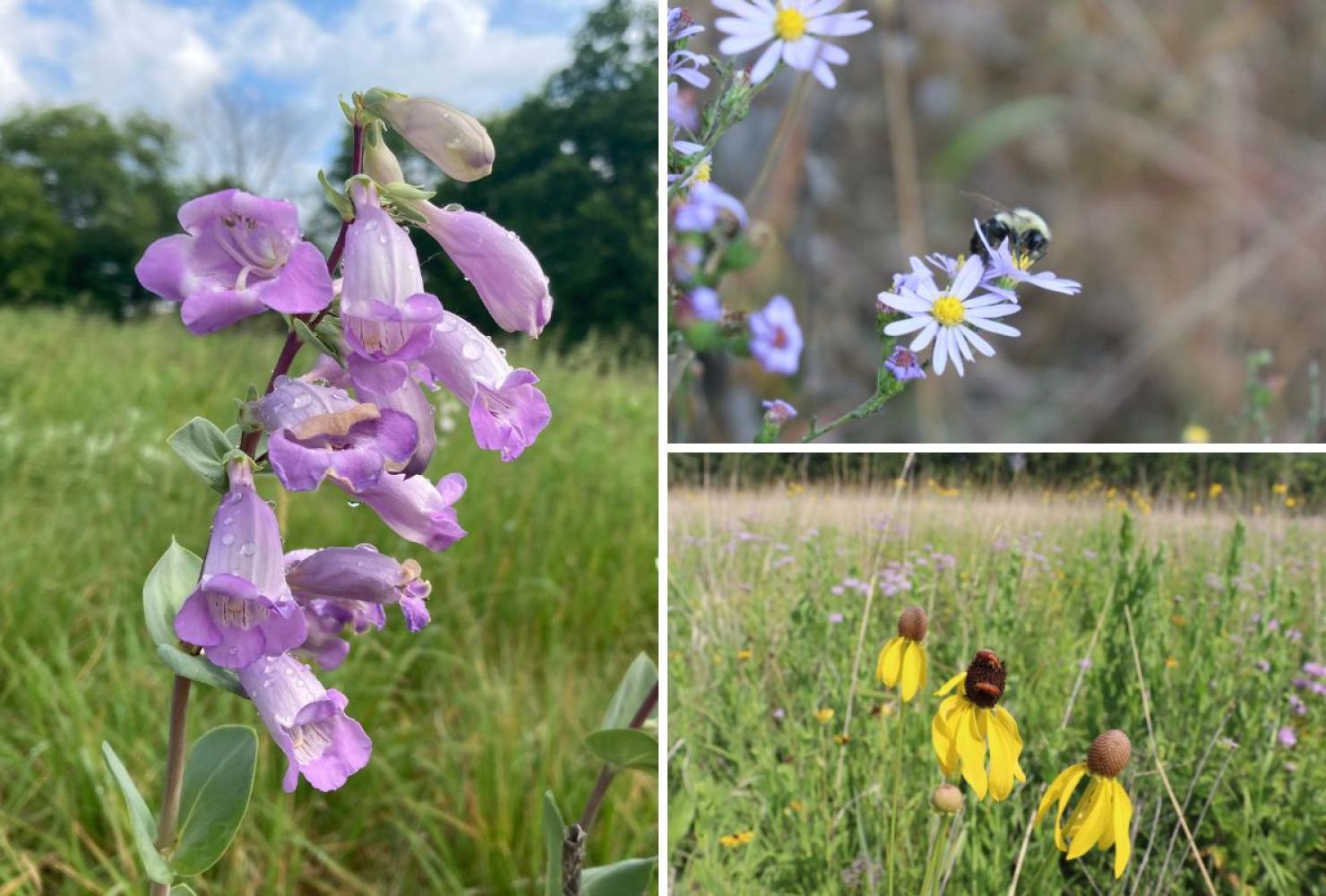A guide to local prairie wonderlands
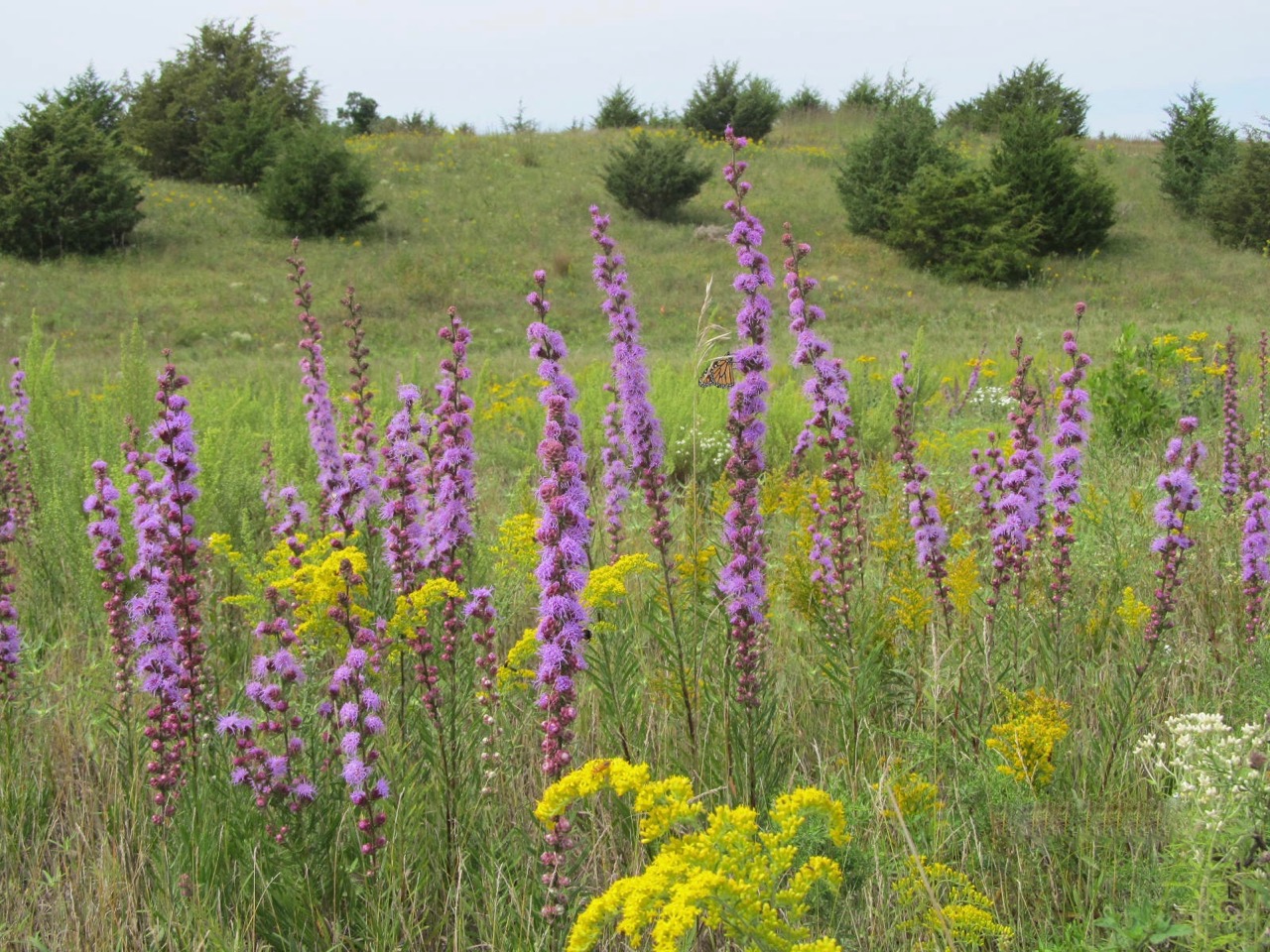
Look for purple liatris and yellow goldenrod in late summer.
Every summer month brings a different spectacular mix of blossoms to local prairies.
In early summer: showy purple penstemon and orange puccoon. In July: purple bergamot and bright yellow black-eyed Susans. In August: blazing star's tall stalks lined with purple bursts.
All that purple, paired with yellow flowers (think goldenrods, yellow coneflower) and white flowers (like sweet everlasting), are beautiful to our eyes. But it turns out, this visual feast isn't really for us.
In her book "Braiding Sweetgrass," Robin Wall Kimmerer explains why goldenrods and purple asters look so amazing together. What may seem like a whimsical observation turns out to have a biological basis. Gold and purple are complementary, each making the other appear more vibrant. Bees are attracted to this vibrancy, making flowers with these colors more likely to be pollinated.
You can enjoy the popping colors and buzzing pollinators in all our favorite metro prairies. We've pulled together a guide of natural areas and parks spanning from Elk River to North Minneapolis to Hastings where you can find beautiful prairies protected or restored thanks to FMR supporters.
Grey Cloud Dunes SNA, Cottage Grove
Grey Cloud Dunes Scientific and Natural Area is a 220-acre riverfront stretch in Cottage Grove. Here, the dry sand-gravel prairie supports an immense diversity of wildflowers and grasses. No matter when you visit during the growing season, you’re bound to see something that catches your eye.
A highly protected area, the site offers no facilities or official trails, but it does offer two parking areas. Note that dogs are not allowed at this SNA, even leashed, in order to protect the plants and wildlife.
Hastings Sand Coulee SNA, Hastings
The Hastings Sand Coulee Scientific and Natural Area harbors the largest native prairie remnant in Dakota County — about 110 acres — along with an outstanding diversity of plants and animals, including 14 rare species.
Since its establishment in 2007, FMR has worked to manage the prairie and expand the protected area with the addition of about 90 more acres.
The array of flowers is a delight almost any time of the growing season. August, however, is one of the best months to find an abundance of blazing star, the monarch butterfly magnet plant. Seeing the two together — orange on purple — is worth the visit alone.
There are no trails or facilities in this highly protected natural area. There is a parking area at the Hwy. 316 entrance, or street parking at the Tuttle Drive entrance. The latter unit has an informal walking trail. FMR often hosts a weed-pulling volunteer event at the Coulee in June and a seed collection in fall. See our events calendar for dates.
Ole Olson Park, North Minneapolis
Orvin "Ole" Olson Park is the site of a 2-acre native dry prairie along the river in North Minneapolis. Although small compared to other FMR restoration sites, this is one prairie patch that's sure to leave a big impression.
Just north of the Minneapolis Park and Recreation Board headquarters (where you can stop to use the restroom or fill a water bottle), the restoration boasts dense blooms of coneflower, butterfly weed, black-eyed Susans, purple and white prairie clovers, and five native grass species. All of this splendor not only has immense benefits for pollinators, birds, wildlife and water quality but it also beautifully frames the downtown Minneapolis skyline.
To learn more, check out this Facebook video of FMR ecologist Alex giving a tour of a prescribed burn’s yield at Ole Olson. Spoiler alert: this patch of prairie is abloom with more native prairie plants producing more seed and harboring more pollinators.
Pine Bend Bluffs SNA, Inver Grove Heights
Pine Bend Bluffs Scientific and Natural Area in Inver Grove Heights has easy access, with a trailhead (including restrooms) and a paved trail to walk or bike through the prairie.
The 17-acre prairie north of the trailhead was restored in 2007 from an old field of mostly non-native plants. Look for the white spiky blooms of rattlesnake master and the tall yellow flowers of compass plant, whose leaves can help you if you are lost, as they align north-south.
The bluff prairies are more challenging to get to but will reward you with views of the river and a better understanding of what an original remnant dry prairie would look like, with sparse, low plants and a different variety of species. Volunteers help every year in July to remove invasive weeds from these bluff prairies.
River Oaks Park, Cottage Grove
River Oaks Park is truly a hidden gem. The 2.1-acre site in Cottage Grove has no facilities; instead, a narrow trail accessible from the end of a cul-de-sac parking area winds through forest and savanna at the site before terminating in a remnant bluff prairie overlooking the expansive Mississippi River.
Visit this site in August to see the purple from hundreds of blazing star that provide important nectar and habitat for monarchs and other pollinators as they move along the river corridor.
Spring Lake Park Reserve – Archery Trail, Rosemount
The shorter vegetation of the restored, 35-acre dry prairie at Spring Lake Park Reserve (the Archery Trail section) makes it easy to see the different kinds of flowers here.
In August you'll find mounds of bergamot and yellow coneflower, with goldenrods, blazing star and asters coming in. Another wonderful time to see this site is early June when you’ll find wild lupine, hairy puccoon, large-flowered penstemon and prairie phlox in bloom.
William H. Houlton Conservation Area, Elk River
At the William H. Houlton Conservation Area — one of the largest undeveloped riverfront properties in the metro — we're restoring 160 acres of soybean field and grazed grasslands into prairie and oak savanna
We seeded 70 plant species in parts of the site, plus installed wetland basins for aquatic habitat. The outcome is a rich tapestry of colors, textures and wildlife. It's wonderful to watch the prairie bloom each season and remember that, not long ago, this site grew only soybeans.

